Sliced Porosity Block by Steven Holl Architects
New York firm Steven Holl Architects has completed the Sliced Porosity Block, a cluster of five towers around a public plaza in Chengdu, China (+ slideshow + photographs by Hufton + Crow).
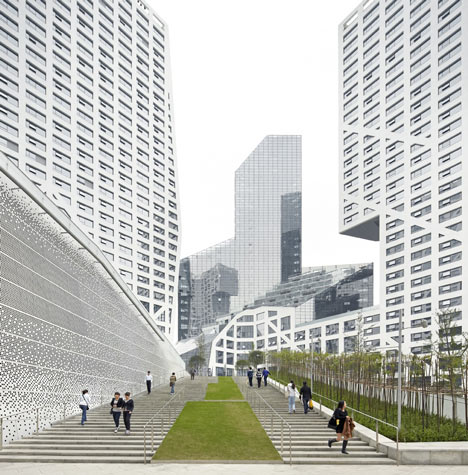
The buildings, designed by Steven Holl in 2007, were conceived as an alternative to the "towers and podium" approach commonly adopted for large mixed-use developments. Instead, the five towers were imagined as an integrated complex, with a central public space that wraps up over a shopping centre.
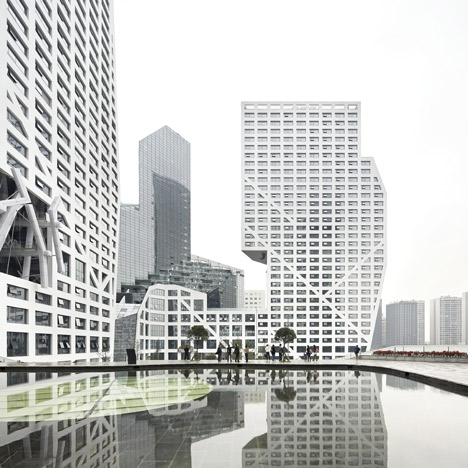
Holl explained: "In our time of iconic object buildings, the Sliced Porosity Block offers an alternative - realising three million square feet of mixed uses with the public space coming first."
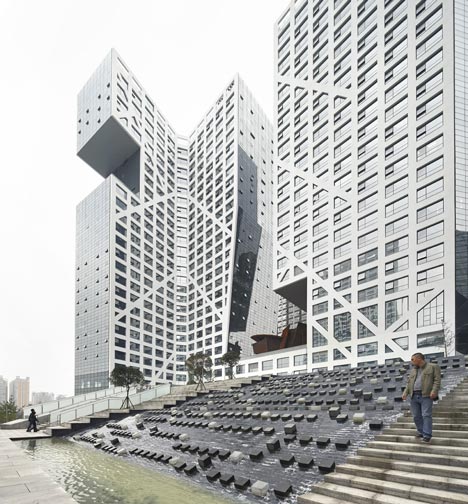
Light passes between the buildings through "sliced" openings and recesses, plus three large voids provide entrance pavilions that lead inside the complex.
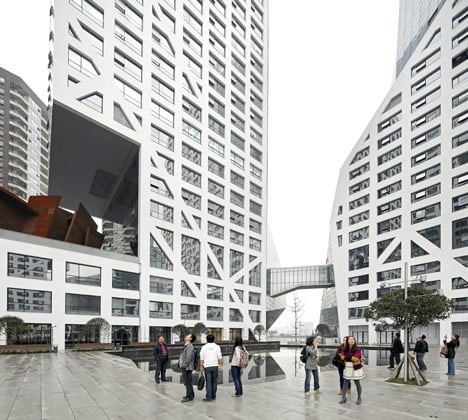
These pavilions include the Light Pavilion, a four-storey construction of steel rods and glass platforms that is the first built project by architect Lebbeus Woods, who passed away this Autumn.
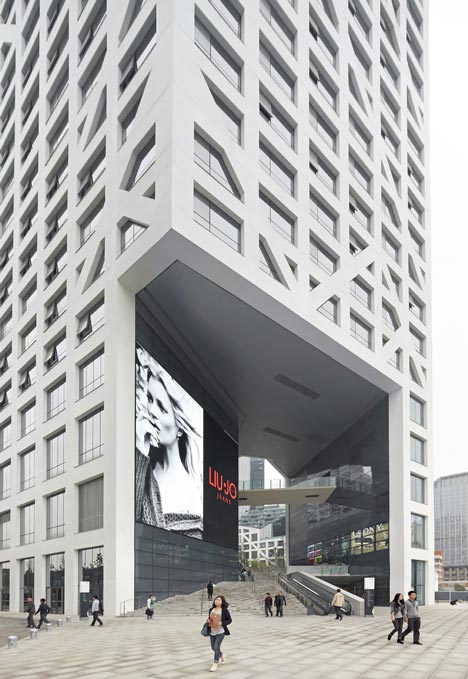
"Lebbeus's pavilion, constructed of huge beams of light, is a place one enters at several levels," said Holl. "One's experience there, especially at night, seems to dissolve the view of the city beyond. Up is down in a feeling of suspension of gravity via light and reflection."
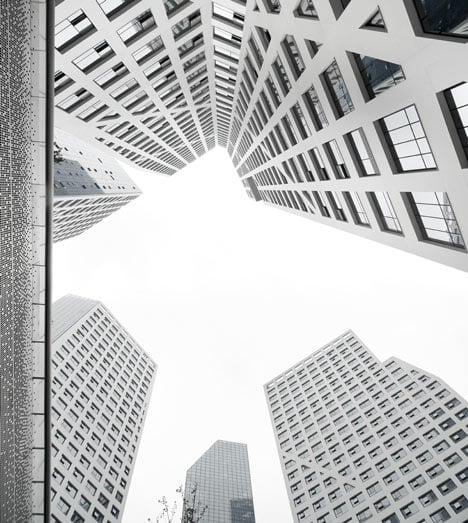
Staircases lead up to the central plaza, which comprises three terraces with seating areas, trees and large pools of water. These pools also function as skylights for the shopping centre below.
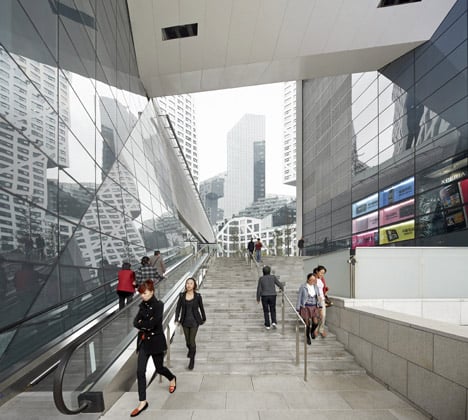
Explaining the importance of this space, Holl said: "The public plaza is [the building's] gift to the city. Having seen the people eagerly using this space is a real joy."
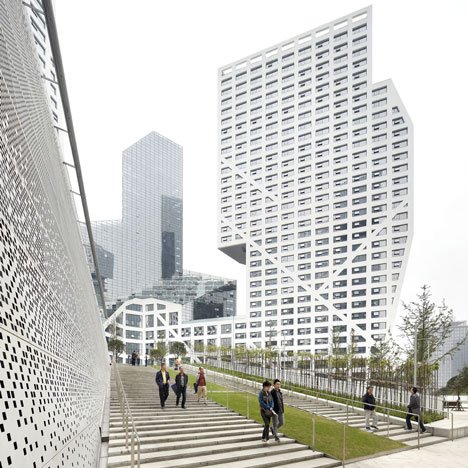
White concrete frameworks are expressed on the exterior of the towers and reveal diagonal braces that protect the structure during earthquakes.
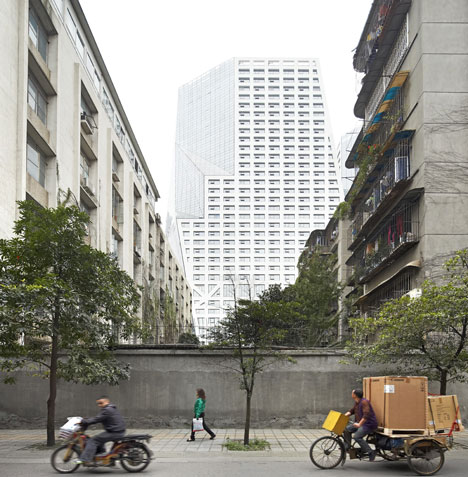
Each building is heated and cooled geothermally, plus the large ponds are cooling devices that harvest and recycle rainwater.

This isn't the first project by Steven Holl Architects in China. The firm previously completed the Linked Hybrid complex of eight connected towers in Beijing and a "horizontal skyscraper" in Shenzhen. See more stories about Steven Holl.
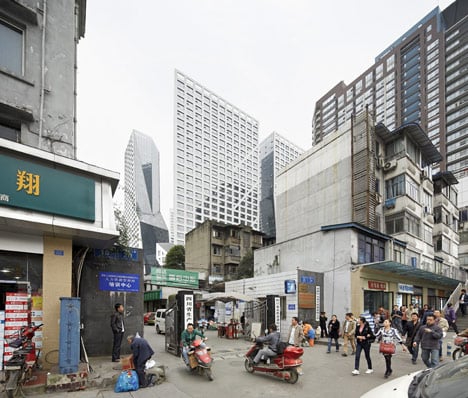
These images by photographers Hufton + Crow show the impact of the building on its surrounding context, just like the shots they took of Zaha Hadid's Galaxy Soho in Beijing. See more photography by Hufton + Crow on Dezeen.
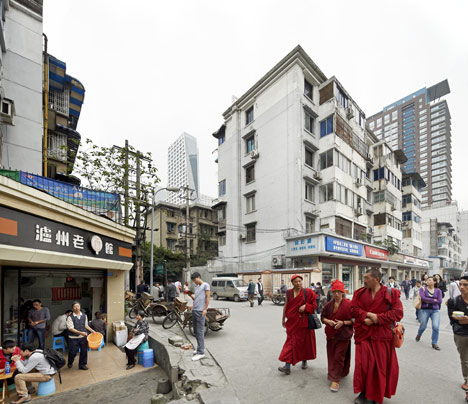
Here's some more information from Steven Holl Architects:
Sliced Porosity Block
Chengdu, China
In the center of Chengdu, China, at the intersection of the first Ring Road and Ren Ming Nam Road, the Sliced Porosity Block forms large public plazas with a hybrid of different functions. Creating a metropolitan public space instead of object-icon skyscrapers, this three million square foot project takes its shape from its distribution of natural light.
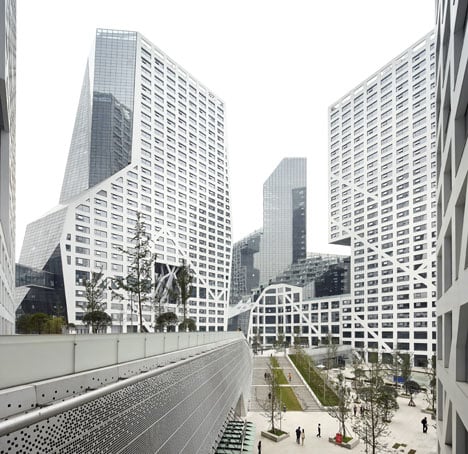
The required minimum sunlight exposures to the surrounding urban fabric prescribe precise geometric angles that slice the exoskeletal concrete frame of the structure. The building structure is white concrete organized in six foot high openings with earthquake diagonals as required while the "sliced" sections are glass.
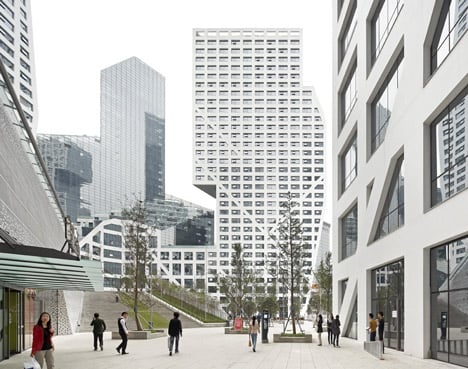
The large public space framed in the center of the block is formed into three valleys inspired by a poem of the city's greatest poet, Du Fu (713-770), who wrote, 'From the northeast storm-tossed to the southwest, time has left stranded in Three Valleys.' The three plaza levels feature water gardens based on concepts of time—the Fountain of the Chinese Calendar Year, Fountain of Twelve Months, and Fountain of Thirty Days. These three ponds function as skylights to the six-story shopping precinct below.
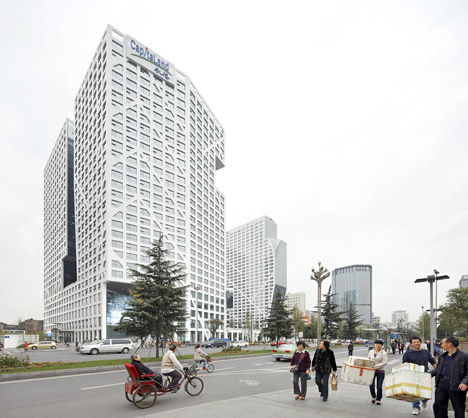
Establishing human scale in this metropolitan rectangle is achieved through the concept of "micro urbanism," with double-fronted shops open to the street as well as the shopping center. Three large openings are sculpted into the mass of the towers as the sites of the pavilion of history, designed by Steven Holl Architects, the Light Pavilion by Lebbeus Woods, and the Local Art Pavilion.
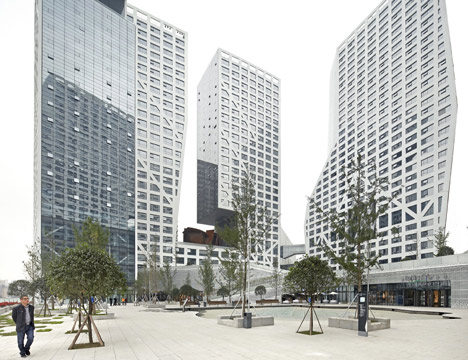
The Sliced Porosity Block is heated and cooled with 468 geothermal wells and the large ponds in the plaza harvest recycled rainwater, while the natural grasses and lily pads create a natural cooling effect. High-performance glazing, energy-efficient equipment and the use of regional materials are among the other methods employed to reach the LEED Gold rating.
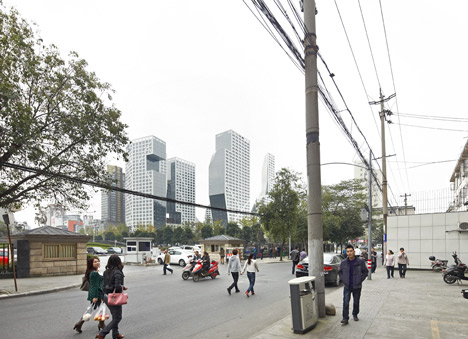
Program: five towers with offices, serviced apartments, retail, a hotel, cafes, and restaurants, and large urban public plaza
Client: CapitaLand Development
Building area (square): 3,336,812 sf
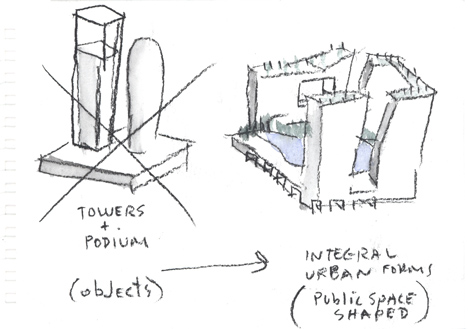
Above: concept sketch
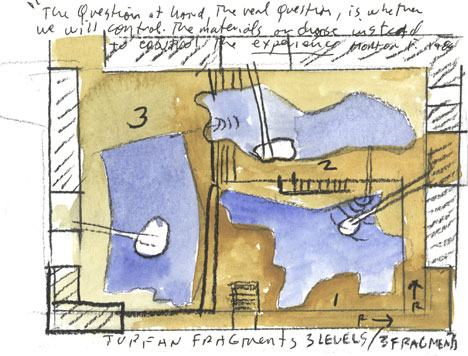
Above: plan concept sketch